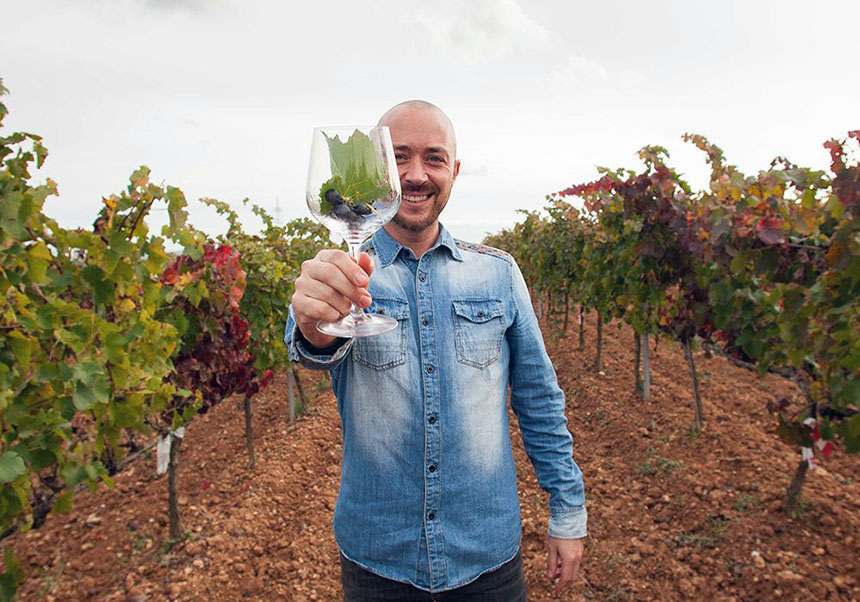
An international investigation in which the Institute of Integrative Systems Biology (I2SysBio, UV/CSIC) participates, in the Science Park of the University of Valencia, manages to complete versions 4 and 5 of the reference genome of the vine (vitis vinifera), in which genes related to the response to stress due to pests or lack of water are found. The information obtained will allow us to design the vineyard of the future, more resistant to climate change. The results have been published in the journals Horticulture Research and G3 Genes|Genomes|Genetics.
While grapevine sequencing was first completed in 2007, this first version and those that followed were incomplete, with many regions still unknown. Many of these genome fragments, which have now been correctly assembled, correspond to centromeric and telomeric regions – that is, the centre and ends of the chromosomes – which were made up of a considerable number of repetitions that made them difficult to read, which is why for which they were not present in previous versions of the genome.
Having the best version of a genome opens the doors to knowing 100% of the genes of a species. Now, thanks to this research, the function of all of them can be studied and it can be associated with characters of interest to the wine industry, through the use of computational biology tools. In this sense, genetic improvement, through traditional methods (breeding), will also be favoured.
Versions 4 and 5 of the grapevine genome
Version 4 of the genome showed the pedigree of the cultivar used called PN40024. Initially believed to correspond to the Pinot Noir variety, crossed nine times by inbreeding, subsequent genomic analysis showed that it was actually the Helfnsteiner variety (a cross between Pinot Noir and Schiava Grossa). This version also made it possible to generate a highly valued resource: an annotation of all the genes in the genome manually curated by members of the scientific community. With genome version 5, the grapevine genome sequence can be said to be complete.
The technology used is based on long-fragment sequencing (long read sequencing). This is a DNA sequencing technique that allows much longer DNA fragments to be sequenced than traditional short-read sequencing methods. While version 4 uses PacBio’s standard long sequence technology, version 5 uses HIFi or high fidelity technology. HiFi reads are produced using circular consensus sequencing mode on PacBio long read systems. High-fidelity readouts provide high resolution with a single-molecule readout accuracy of 99.9%.
COST Grapedia project
The two scientific works have been developed within the framework of the COST Grapedia project, a federative database proposed as an open access platform aimed at addressing challenges in the access and use of genetic, omics and phenotyping data related to grapevines. José Tomás Matus, researcher of the Ramón y Cajal Program of the University of Valencia at I2SysBio – a joint centre of the University of Valencia and the CSIC – is the coordinator of this initiative funded by the European COST Office (Cooperation in Science and Technology).
The Botanical Garden of the University of Valencia hosted this week, from Monday to Wednesday, the annual Grapedia meeting, organised by the I2SysBio scientist. International researchers who have contributed to the project and with valuable experience on databases and FAIR data have gathered at an event that had free access and could be followed online.
The authors of these two scientific publications are part of a consortium formed by several institutes, which include, in addition to I2SysBio, the French National Institute for Agronomic Research (INRAE), the Chinese Academy of Agricultural Sciences, and the Aragon Agri-Food Research and Technology Centre, among others.
References:
Amandine Velt, Bianca Frommer, Sophie Blanc, Daniela Holtgräwe, Éric Duchêne, Vincent Dumas, Jérôme Grimplet, Philippe Hugueney, Catherine Kim, Marie Lahaye, José Tomás Matus, David Navarro-Payá, Luis Orduña, Marcela K Tello-Ruiz, Nicola Vitulo, Doreen Ware, Camille Rustenholz. An improved reference of the grapevine genome reasserts the origin of the PN40024 highly-homozygous genotype, G3 Genes|Genomes|Genetics, 2023. https://doi.org/10.1093/g3journal/jkad067
Xiaoya Shi, Shuo Cao, Xu Wang, Siyang Huang, Yue Wang, Zhongjie Liu, Wenwen Liu, Xiangpeng Leng, Yanling Peng, Nan Wang, Yiwen Wang, Zhiyao Ma, Xiaodong Xu, Fan Zhang, Hui Xue, Haixia Zhong, Yi Wang, Kekun Zhang, Amandine Velt, Komlan Avia, Daniela Holtgräwe, Jérôme Grimplet, José Tomás Matus, Doreen Ware, Xinyu Wu, Haibo Wang, Chonghuai Liu, Yuling Fang, Camille Rustenholz, Zongming Cheng, Hua Xiao, Yongfeng Zhou. The complete reference genome for grapevine (Vitis vinifera L.) genetics and breeding, Horticulture Research, 2023. https://doi.org/10.1093/hr/uhad061
Links:










